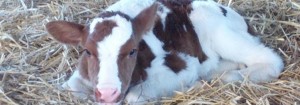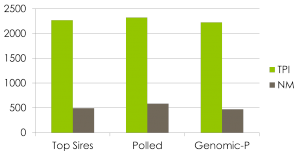By: Adam Hill
Why Polled?
Polled genetics are the wave of the future for added value of cattle within the industry and are the focal point of many talks and farmers alike
Currently polled genetics are being pushed for throughout the industry as well as safer animal welfare practices. Such examples include
- AVMA (American Veterinary Medical Association)
- Welfare Protocols such as more pain reliever usage and advocates for Polled Usage
- Large Dairy Buyers Such as Nestle, General Mills and Dunkin Brands
- Pushing for the humane treatment of animals including polled genetics and put an emphasis on buying polled dairy products
- The General Public
- Overall animal Welfare
The Back story:
- The earliest American-recorded polled Holstein that was located was the bull, Lophelias Prince born on April 22, 1889. He was bred and owned by T. P. Root of Barre, Massachusetts
- George E. Stevenson of Clarks Summit,a town in northeastern Pennsylvania, was the first breeder in the United States to develop a herd of polled Holsteins. He bred grade Holsteins that were polled during the period from 1884 to 1912
- The Polled Jersey originated in Ohio sometime prior to 1895
- The highest availability of polled genetics is through the Norwegian red breed
Benefits
- You don’t have to do any dehorning
- Saves time and stress on animals
- Save possible extra vaccinations due to infections or sickness as a result of dehorning
The Money Factor
- Preliminary research from Purdue found that on average, farms could spend an additional $7.50 for polled genetics and break even with the average costs of dehorning.
- Model Process from Purdue
- Inputs for the model included dehorning costs ranging from $5 to $15 with a most likely value of $7 per animal. The additional cost for polled genetics (over and above the cost of semen from a bull with horns) ranged from $0 to $20, with a most likely value of $8. Treatment costs and the likely need for treatment were also included as follows: cost of treatment ranged from $10 to $150, with a most likely cost of $50; the likelihood that an animal would need to be treated was 1 to 8% for dehorned and 1 to 3% for polled, the most likely values were 3% and 2% of animals for dehorned and polled. These inputs were simulated in a model that selected combinations of the various inputs 10,000 different times and reported an average value for the simulation.
What Stud company lineups look like
- Company A (Top 5 Bull Averages)
- Company B (Top 5 Bull Averages)
What is going on in the Industry?
- The most recent December evaluations had at least one polled bull in the top 10% for the entire Holstein breed in 37 of 38 traits that are evaluated. In April 2012, this number was only 28 of 38 traits.
- An Arizona herd that breeds for polled genetics has had these results:Average milk per day:Polled – 66.5, Horned – 65.9Average 305-day milk yield:Polled – 22,718, Horned – 22,159
What is the Buzz?
- “The benefits of polled animals are both tangible and intangible”
- “The joy and pleasure of seeing a polled calf born are similar to watching your favourite team win or watching a child achieve a milestone, and you can’t put a price on that.”
- “Polled is a dominant trait, similar to black hair color, it is much easier to incorporate polled into high-producing families, versus the other way around.”



